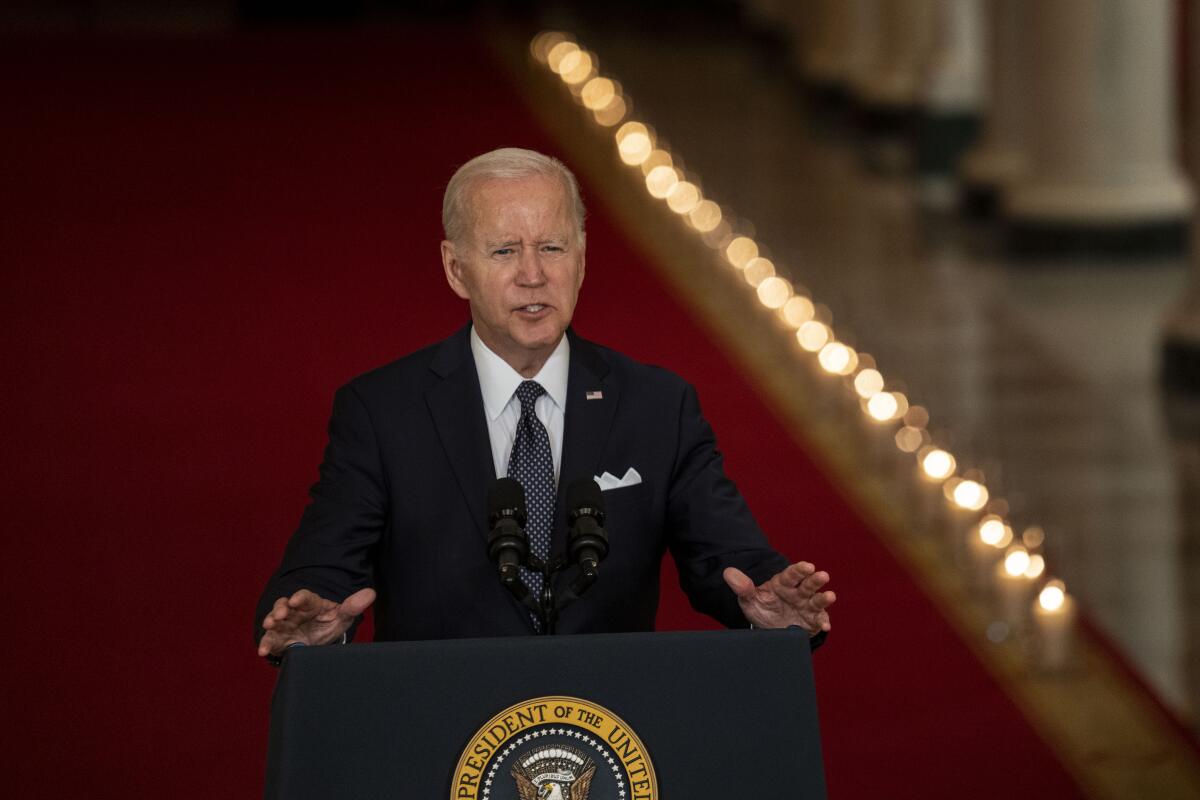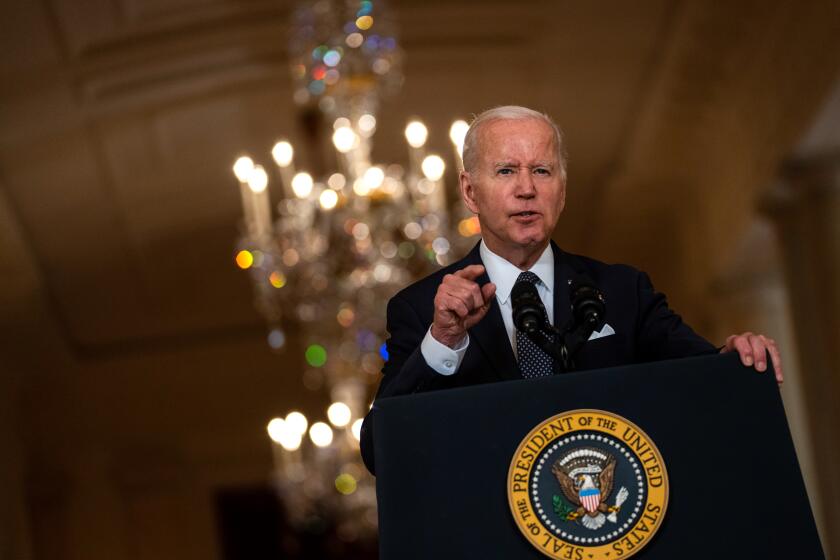Column: Endless mass shootings make our outrage dim. We can’t let gun violence harden our hearts

- Share via
How do you gauge the effect of so many mass shootings on our psyches?
How can we tell whether we are becoming numb to the daily reports of gun murders at schools, churches, synagogues, grocery stores, massage parlors, theaters?
We think we maintain our sense of outrage and loss, but slowly, over time, the calluses are growing on our hearts.
Early reports about the elementary school shooting in Uvalde, Texas, said that two people had died. Do you know what my first thought was?
How horrible, but thank God it’s only two people.
That first report would prove wildly incomplete. By the time the attack was over, 19 fourth-graders and their two teachers had been slain by an 18-year-old armed with an assault weapon.
When I read about the medical building shooting in Tulsa, Okla., eight days later, again, my reaction was horror, outrage once more, and a tiny bit of relief that only four people had been killed. A man unhappy about his back surgery hunted down and killed his surgeon and three other people. Four people lost their lives. Only four.
Please do not think I’m becoming inured. I’m just relieved it wasn’t worse.
How much more of this can we take before our elected leaders do something meaningful?
“After Columbine, after Sandy Hook, after Charleston, after Orlando, after Las Vegas, after Parkland, nothing has been done,” President Biden said Thursday from the White House. “For God’s sake, how much more carnage are we willing to accept? How many more innocent American lives must be taken before we say, ‘Enough’? Enough.”
President Biden promised in an address Thursday that his call for Congress to pass laws to curb gun violence was “not about taking away anyone’s guns.”
He pleaded with Congress to ban assault weapons and high-capacity magazines, or at least raise the minimum age to purchase them from 18 to 21, to strengthen background checks, pass “red flag” and safe-storage laws, repeal the immunity that protects gunmakers from liability lawsuits, and to address the mental health crisis that leads to gun violence.
Maybe, just maybe, this time around recalcitrant Republicans will be motivated to act. Texas Republican Sen. John Cornyn, who was asked by Senate Minority Leader Mitch McConnell to represent him in bipartisan negotiations on possible gun legislation, offered a sliver of hope when he admitted that it will be “embarrassing” if the Senate can’t get anything done on the issue.
Thirty-one years ago, shortly after I was hired by The Times, I covered the aftermath of a hospital shooting in Sandy, Utah. It was a huge story at the time but the sort of news that would earn little coverage today. You see, only one person died. It was not, technically speaking, a mass shooting.
At the time, though, it was unthinkable.
Luella Worthington cannot hold back the tears.
This was four years before a domestic terrorist blew up a federal building in Oklahoma City, killing 168 people, including babies in a day-care center. Eight years before two teenagers with guns massacred 12 students and a teacher at Columbine High School in Littleton, Colo. Ten years before terrorists flew planes into the World Trade Center, the Pentagon and a field in Pennsylvania, killing 2,977 people.
Three decades ago, we were far more easily shocked.
On Sept. 20, 1991, Richard Worthington, a 39-year-old devout Mormon and father of eight, drove to Alta View Hospital in Sandy. He stormed the hospital maternity ward with a handgun, a shotgun and a bomb made of 42 sticks of dynamite, powerful enough to blow up half a city block. His mission: to kill the doctor who had given his wife a tubal ligation two years earlier.
Although Worthington had grudgingly agreed to the procedure, over time he’d decided that he had one more baby in heaven waiting to be born and that the physician had tied his wife’s tubes without consent, while she slept.
The hospital siege lasted 18 hours; remember, this was before the FBI developed its active-shooter protocols, which instruct law enforcement to immediately confront a gunman. Worthington took seven hostages — five adults, including a woman who would soon deliver a baby, and two newborns. The doctor hid in an office and called police. When a courageous nurse named Karla Roth tried to disarm him, Worthington killed her.
Producers converged on Utah seeking to buy the rights to the story. It was a tragedy, yes, but also so dramatic that Hollywood’s first instinct was to make it into a TV movie. The principals, including the gunman’s wife, sold their rights to competing producers.
I remember the movie that aired on CBS in 1992, “Deliver Them From Evil: The Taking of Alta View.” It starred Harry Hamlin as Worthington and Teri Garr as one of the nurses. The made-for-TV movie was categorized as a “thriller.”
The Utah hospital siege was not a catalyzing event. At the time, it was so bizarre, so random that it did not spark widespread discussion about gun ownership or even about the dearth of mental health services for people like Worthington, who was in so much emotional distress, neighbors said, he claimed the doctor had raped his wife.
A month after Worthington’s hospital siege, a gunman in Texas crashed his truck into a Luby’s Diner, emerged from the cab and shot 22 people dead before killing himself. (Another victim died later.)
At the time, it was the deadliest mass shooting in U.S. history.
And now, three decades later, it is merely the sixth.
Twenty-two of the country’s 30 deadliest mass shootings have taken place since 1991.
Sixteen of the 30 deadliest have taken place in the last 10 years. The trend is clear.
Will our Republican senators finally summon the political will to say, “Enough”?
More to Read
A cure for the common opinion
Get thought-provoking perspectives with our weekly newsletter.
You may occasionally receive promotional content from the Los Angeles Times.













